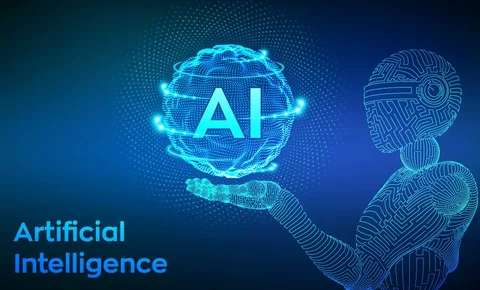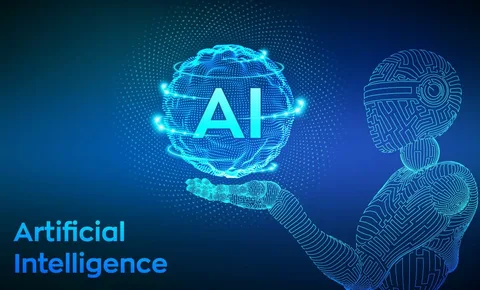Imagine a world where artificial intelligence not only meets but anticipates your demands, streamlining tasks before you even ask. That’s what Alaya AI provides with its cutting-edge machine learning and enhanced cognition computing. You might be wondering how this technology will alter industries and daily lives and what particular aspects set it apart.
By investigating its adaptability, scalability, and continuous learning capabilities, you will see how it is poised to reinvent efficiency, productivity, and innovation. Curious about real-world applications and potential drawbacks? Let’s explore
What is actually Alaya AI?
Alaya AI is a distributed artificial intelligence (AI) platform that combines data collecting, annotations or labeling, and social commerce to gather, manage, and analyze data for enterprises and AI applications. Social commerce facilitates collaboration between technology, communities, data, and AI and encourages users to contribute to data collection. Individual involvement in data gathering and labeling allows Alaya AI to give more accurate and high-quality data while protecting its ownership and privacy. Furthermore, enterprises and companies that use Alaya AI to acquire essential data find it less expensive than alternative alternatives.
Here’s an example that will assist you in comprehending the technique. Assume you are a corporation that manufactures self-driving or automated vehicles. You will need to gather information from drivers regarding traffic laws, objects, and pedestrians on the road. Thus, you may use Alaya AI to collect data that can then be used to train the AI model in your cars. It will make the process quicker and more cost-effective for you.
What does Alaya AI work?
Data Collection and Labelling: Users provide data (text, photos, etc.) that is important to specific tasks. Alaya’s AI then analyses and labels the data for training.
Earning Rewards: Users are given ALA tokens for their help. These tokens have real-world value and can be utilized throughout the Alaya ecosystem.
AI Model Training: The information gathered and labeled data is utilized to train Alaya’s AI models, resulting in increased accuracy and efficiency.
Core technologies: Alaya AI uses numerous modern technologies to improve data quality in AI systems. Two of the fundamental technologies are:
Artificial Intelligence: Alaya AI’s platform employs AI algorithms for scalable data collecting and intelligent advice, allowing organizations to analyze and use their data more efficiently.
Blockchain: By incorporating blockchain technology, Alaya AI adds an extra layer of data protection and traceability, building trust in the data quality and distributed platform.
These technologies enable Alaya AI to provide high-quality, scalable data solutions, opening the door for optimized AI operations across multiple sectors.
Alaya AI is a decentralized ecosystem for AI data
Alaya AI creates a distributed AI data labeling platform based on natural swarm intelligence. This is how it works.

Alaya AI uses a network of varied individuals to participate in data labeling jobs. In contrast to centralized approaches, this dispersed approach draws on a broader range of knowledge and perspectives.
Gamified User Experience: The platform includes gamification features, which make data labeling an engaging and rewarding experience. Users receive rewards such as NFTs (non-fungible tokens) for participating in competitions, which promotes community participation.
Privacy-Preserving Technology: Alaya AI values user privacy. It employs zero-knowledge encryption to ensure users submit data while protecting sensitive information.
The data annotation sector has long been a significant contributor to the worldwide economy, with companies like Scale AI, Appen, Lionbridge, and CloudFactory leading the way. However, traditional enterprises have struggled to reach a more extensive client base and sustain regional inequities.
Essential features of Alaya AI
Machine Learning: Alaya AI uses machine learning methods to continually enhance performance and adapt to changing data patterns.
Natural Language Processing (NLP): With NLP capabilities, Alaya AI can read and interpret human language, allowing seamless user interaction via voice commands or text input.
Alaya AI uses predictive analytics to foresee future trends, identify potential hazards, and optimize corporate tactics for improved results.
Automation: It automates repetitive procedures and workflows, streamlining operations and minimizing manual labor.
Advantages and cons of employing Alaya AI.
Artificial intelligence (AI) is ubiquitous and used by enterprises worldwide. With so many firms using AI to improve their operations, why should you consider Alaya AI? So why not? To help you make an informed decision, consider the main advantages and disadvantages listed below.
Advantages
Diverse data: One of the primary reasons for Alaya AI’s appeal is its diverse data set. Alaya has successfully ensured and increased the diversity and richness of the data it collects. Imagine if, instead of wasting numerous hours and effort on data collection, Alaya AI handles it efficiently.
Data is highly reliable and accurate. Amazing features like gamification and strong quality control techniques improve the dependability and accuracy of acquired data, producing more reliable data for training AI systems.
Collective Intelligence: Alaya’s “Collective Intelligence” function helps eliminate spatial and temporal constraints, allowing data to be collected and analyzed from various users worldwide. As a result, our AI platform can effectively incorporate and use the community’s various knowledge and expertise, improving the AI’s predictive and analytical capabilities. This leads to more innovative solutions that better meet real-world needs.
Disadvantages
Alaya AI is a new platform created in 2023 and is still in its early stages compared to other well-established AI tools. Despite rapidly attracting over 400,000 registered users, its long-term effectiveness and dependability have yet to be demonstrated. This indicates that, while Alaya AI is fast developing, it will take time to prove its quality and stability fully in the future.
Dependence on User Participation: Alaya AI’s data collection model’s performance significantly depends on user participation. The quality and quantity of data collected may be affected if the platform cannot attract and retain many active users. As a result, Alaya AI requires a high level of user interaction in its actions to be effective.
Conclusion
The future of AI training data is here, and it’s more fascinating than we could have dreamed. Alaya is leading the way into this new frontier with its novel NFT system, intriguing task categories, and substantial rewards. Platforms like Alaya will be critical in ensuring that this technology grows ethically, inclusively, and for the benefit of all. As the platform expands and matures, observing how it impacts the landscape of AI development, and Web3 will be intriguing. One thing is for sure: the days of tedious, one-sided data collection have ended. Welcome to the new world of Alaya, where contributing to AI growth is profitable and enjoyable.
